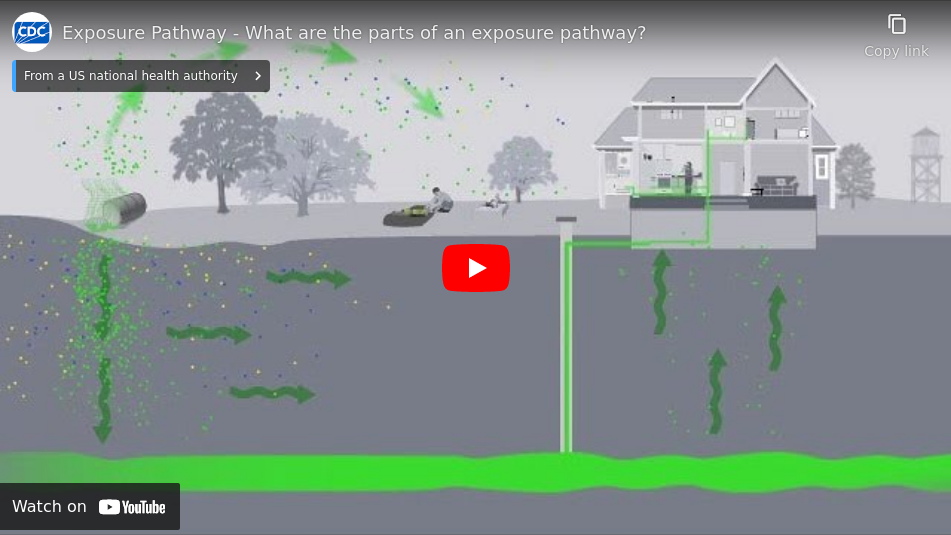Exposure Pathway
There are five parts of the exposure pathway and each is evaluated to determine if people could be exposed to site-related contamination.
The first part identifies a contaminant source or a place where the chemical was released. The next part looks at how the chemical might move or change in the environment. Some chemicals break down when exposed to air, water, or microorganisms, such as bacteria. Air, soil, and water are the major elements that can move or change a chemical. Sometimes the chemical can get into plants and animals that people eat, so we also consider how eating contaminated plants and animals could affect a person’s health.
The third part looks at where people could come in contact with the chemical. Some examples of this include outdoor or indoor air, drinking water taps, residential yards, where the chemical was spilled, and the food supply.
The fourth part looks at how the chemical enters a person’s body. In other words, is it possible to inhale or breathe in the chemical; to drink or ingest the chemical from water, soil, or the food supply; or to absorb the chemical by touching water or soil?
The fifth and final part in the exposure pathway evaluates whether there are people in the community who could be exposed. For example, if someone uses a public water supply, they would not be exposed to any contaminated groundwater from an old well that is on their property but that no one uses.
